Take a self-guided walking tour of St. John’s, Newfoundland and discover the past – from a port in a storm to a fishing village to a provincial capital. With countless historic landmarks that make both provincial and national historic site lists, you’ll want to take this step back in time!
Disclosure: This post contains affiliate links. If you buy something from one of our affiliates, we receive a small commission at no extra charge to you. Thanks for helping to keep our blog up and running!
Table of Contents
Creating a self-guided walking tour of St. John’s
It’s no secret that we love creating our own self-guided walking tours. There’s a freedom that comes when you’re not tied to a group on a set schedule. Plus, you have the option of picking and choosing where you go, how long you spend at each stop, and fine-tuning the route on the go!
If you love walking and hiking, best sure to check out our post about adventures on Bonavista Peninsula, NL!
We were travelling in St. John’s with friends. While we’re avid history buffs, we know there’s a limit to how much others can tolerate. Planning our own flexible tour made sense. We wanted to see some of the historical sites in the city, get a little exercise walking the hills of St. John’s, and maybe take a tour inside one or two of the buildings if available.
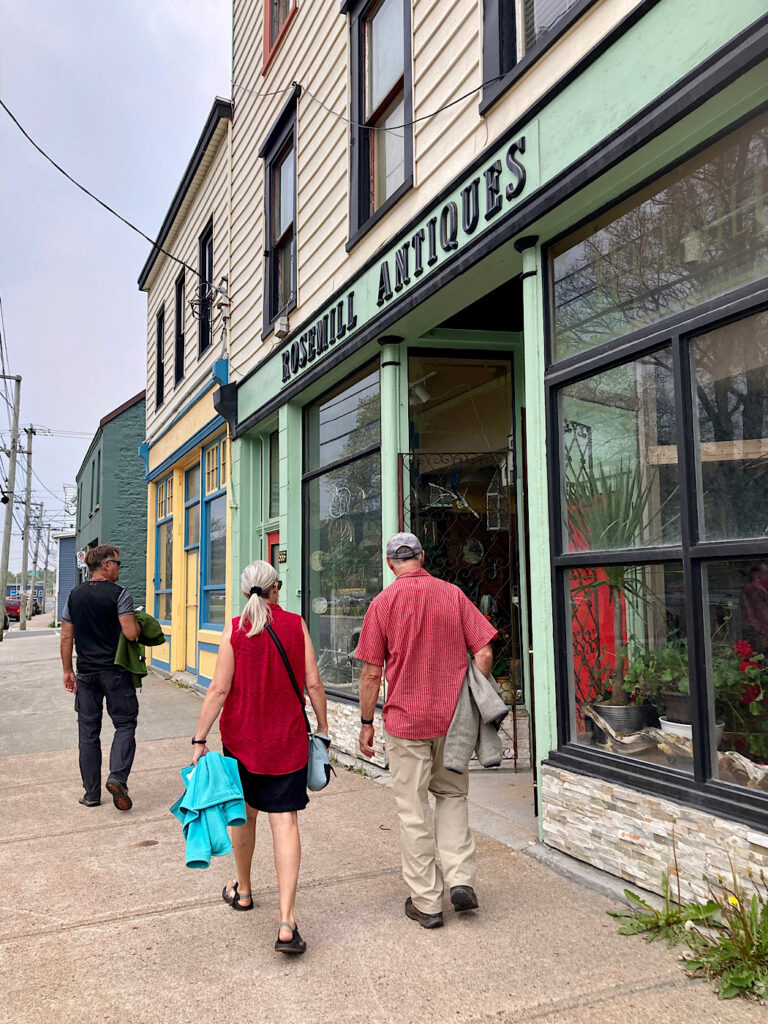
Picking the route for your self-guided St John’s walking tour
First stop: St. John’s downtown visitor centre. Here, we picked up the four historic walking tour pamphlets I’d read about earlier in my trip research online. I looked for copies of these online but couldn’t find them, so there was no planning ahead of time.
Want to know what to pack for a trip to Newfoundland? Check out this post!
In the visitor centre, we spread out the downtown map. Next we circled the general locations for each of the four tours (based on their individual tour maps). Right away, we set the Quidi Vidi tour aside. It was too far away for the time we had today.
Looking at the remaining three walking tours, we opted to work our way west to east through town. A Step Back in Time Through the West End Tour #3 became #1 for us. I’d done some preliminary research on historic sites in St. John’s. It didn’t take long to realize that there was more to see and do than we had time. Heading out with a set route gave us an easy starting point for our day.
4 free walking tour pamphlets from the St. John’s Visitor Centre
- Walking Tour #1 – A Step Back in Time Through the Historic East End
- A Step Back in Time Through the Streets of Old Downtown – St John’s Walking Tour #2
- St. John’s Walking Tour #3 – A Step Back in Time Through Historic West End
- A Step Back in Time Around Quidi Vidi Village – St John’s Walking Tour #4
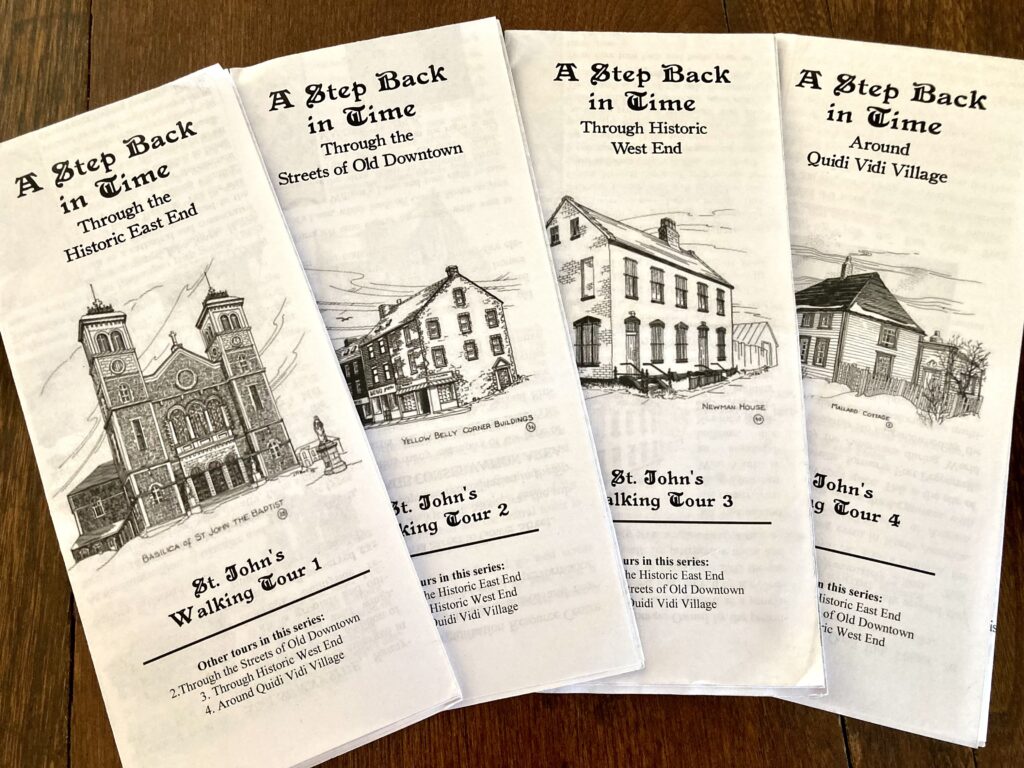
Highlights of our St. John’s walking tour
When you’re not familiar with a city, you can spend a bit of time finding your bearings. Tour maps don’t show overpasses, underpasses, hills, construction, and where sidewalks exist or don’t exist. After parking, we walked downhill to New Gower Street and headed west to Job St. and down to Water St.
In hindsight, it would have been easier to continue straight downhill to Water Street and follow it west. Our route still got us to Stop #1: Railway Coastal Museum.
Built in 1903, this beautiful Victorian-style building features local granite capped with an aged copper roof. The museum features land and sea trade, but we opted to continue our walking tour outside instead of heading in.
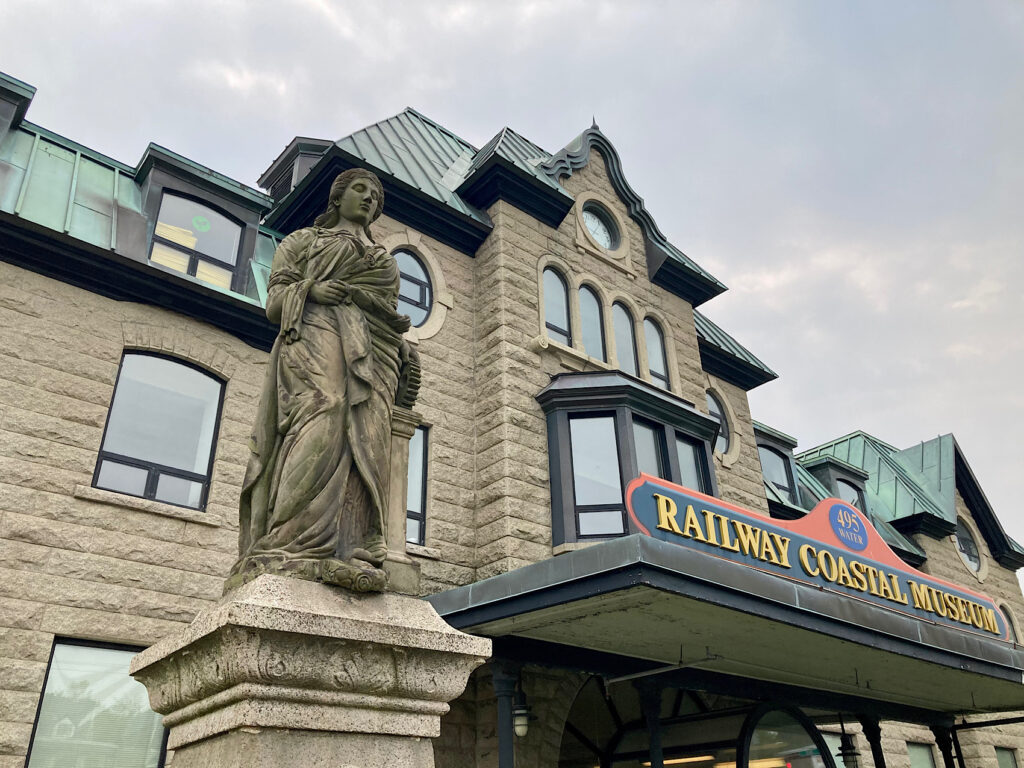
Following the route map, we headed uphill to St. Patrick’s Deanery and St. Patrick’s Roman Catholic Church. We poked our noses down the road leading to Holy Cross Memorial Park. Next up was Martin McNamara’s house.
Home and Registered Heritage Structure
With its single, central chimney and pyramidal roofline, the Martin McNamara house is a well-kept and unique property. According to Heritage Newfoundland and Labrador, it is located in what used to be a primarily Irish immigrant neighbourhood.
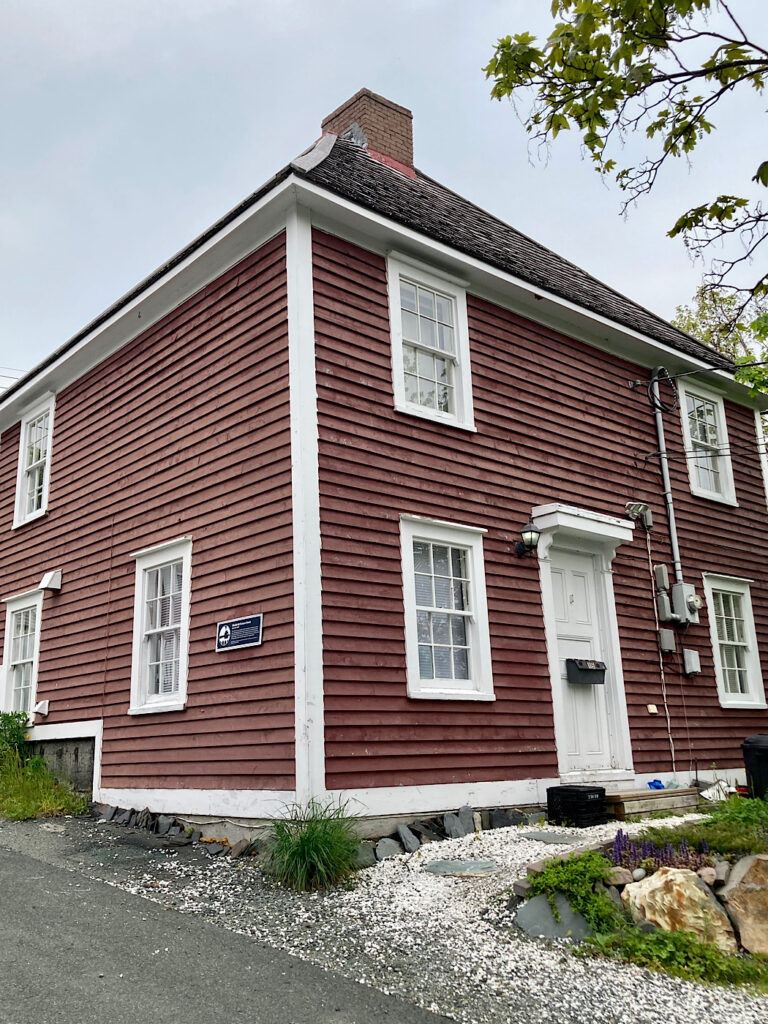
This heritage buidling was constructed on Brine’s Farm, which was part of a crown land grant to James Brine. Fisherman Martin McNamara bought the property in 1857. It is still a private home today.
From here we wandered down Plank Road past the Templeton paint factory. You can read about John Templeton’s discovery of historic paint chips including today’s jellybean rowhouses. Down on the nearby corner of Job and Water Streets, we stopped to read war hero Tommy Rickett’s memorial.
Heading east, we took a moment to appreciate the Art Nouveau and Art Deco architecture of Apothecary Hall. It’s a museum today if you have time.
And that’s when I saw the sign ahead…
Newman’s Wine Vaults
The sign on the sidewalk read: Newman’s Wine Vaults Provincial Historic Site. Open.
Yahoo!
I’d visited the website twice and both times it said that the vaults were only open Saturday and Sunday. This being a Friday, I didn’t think we’d get inside the only stone wine vault in the province. It’s also one of the oldest standing structures in St. Johns. Open was a great sign. Turns out it had just changed to the summer schedule the day before we arrived.
The bland stone building façade hides an architectural treasure. There are two massive brick and stone vaulted port wine cellars dating back to the early 1700s. Stepping in, we were greeted by Lisa, a newly minted archaeologist and tour guide with a passion for Newfoundland’s history.
She drew us into the tale of 1679 when a Portuguese vessel loaded with port wine bound for London – and the English mercantile firm of Newman & Co – encountered French privateers. Fleeing the pirates, the ship headed out further into the Atlantic. Storms hit the ship and the captain opted for safe harbour in St. John’s for the rest of the winter. The cargo of port wine was carefully unloaded and stored in caves in the hills surrounding the harbour.
A very fine tour – and even finer wine!
In spring, the ship completed its journey to England. When the cargo was unloaded, it was discovered that the port had changed – for the better. It was richer, smoother and more flavourful than before. Newman & Co decided from that point on, they would age its port wine in Newfoundland.
The caves were used for four years. Then Newman’s took over these existing stone vaults (exact origin unknown) and used them to age their port. With the creation of the Board of Liquor Control in 1914, the vaults became a government bonded warehouse. Newman’s port – and other liquor products – were stored here until 1966.
We sipped a sample of Newman’s Ruby Port. It was the only variety sold to Newfoundland’s upper classes and officer corps of the British military stationed in St. John’s in the 18th and 19th Centuries. Lisa says she can remember her grandmother serving Newman’s port at Christmas.
Adapting to time, weather, and interest
Having worked up an appetite on our walk, we headed out past the Newman’s House next door and back up to Water Street. It was time for Rocket’s Bakery. Lunch included excellent lattes, chicken sandwiches, spinach salad, and ginger molasses cookies!
Sitting in the warm sunshine well into the afternoon, we started reassessing our grandiose plan to work our way through two more walking tour routes. It wasn’t going to happen. Luckily Lisa had pointed out a few of her must-see historic sites. These included the Basilica and Colonial House, both of which were in the general direction we were headed.
Out came the map.
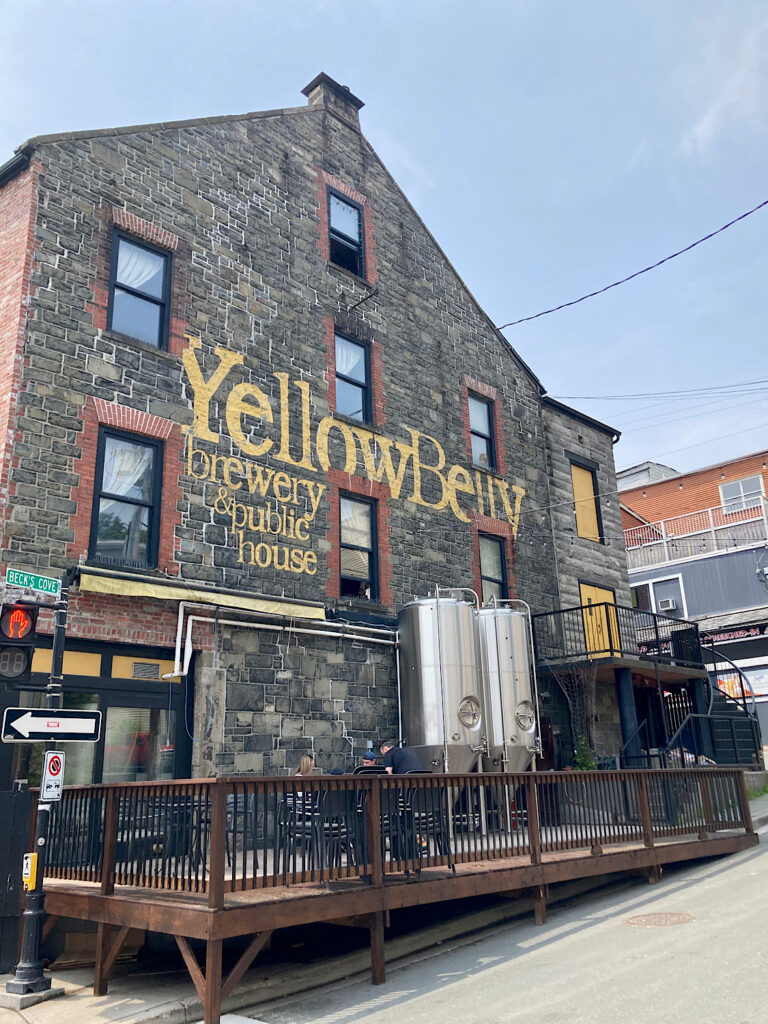
Making a second walking tour plan
We plotted a route to Yellow Belly Corner and down to the Murray Premises – the only remaining mid-19th century waterfront fishery premises (former facilities for drying and packing fish and warehouses for fish, barrels, and other items) in St. John’s. It has been designated a National Historic Site.
From there we headed up McBride’s Hill past the mural depicting the Great Fire and up Church Hill, stopping in at the Anglican Cathedral of St. John the Baptist.
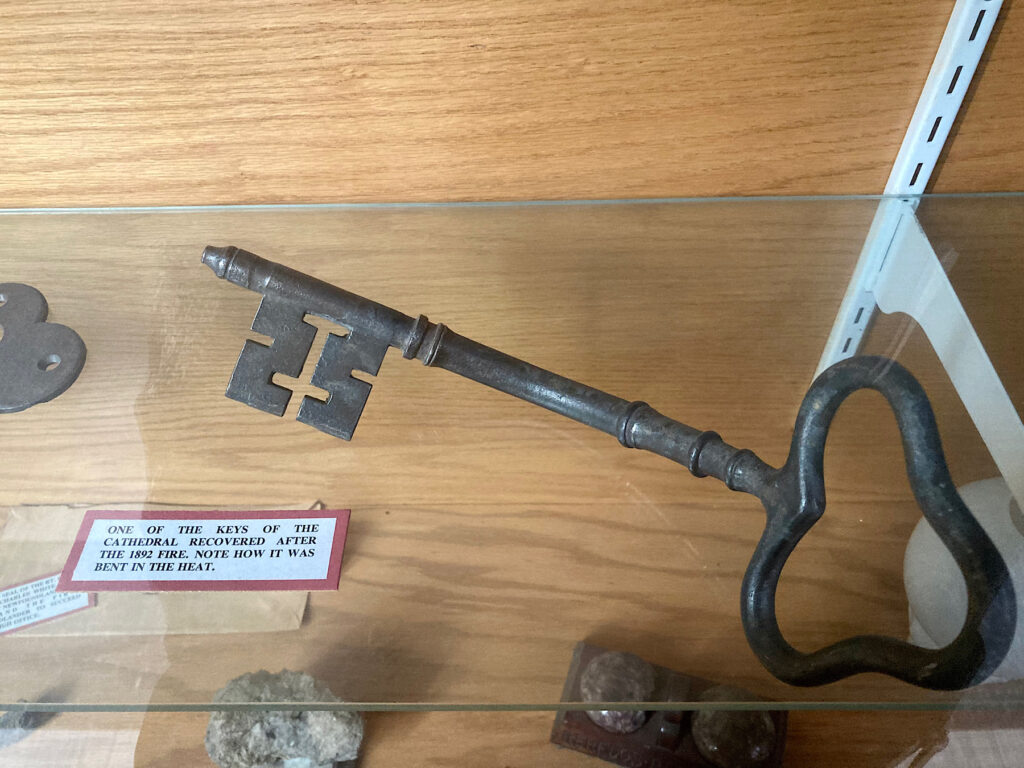
From here we climbed up to Queen Road and across to Cathedral Street. On the corner we read the plaque commemorating the stately building that was once the home of the Benevolent Irish Society – a non-denominational charity established in 1806 for Irishmen or people of Irish descent.
From there we climbed the last bit of Garrison Hill to the Roman Catholic Basilica of St. John the Baptist. It’s another National Historic Site.
Strategically positioned when it was built as a cathedral in 1855, it was far enough from the centre of town to avoid the threat of fire, visible from the entrance of the harbour, prominent enough to be seen from almost everywhere in town.
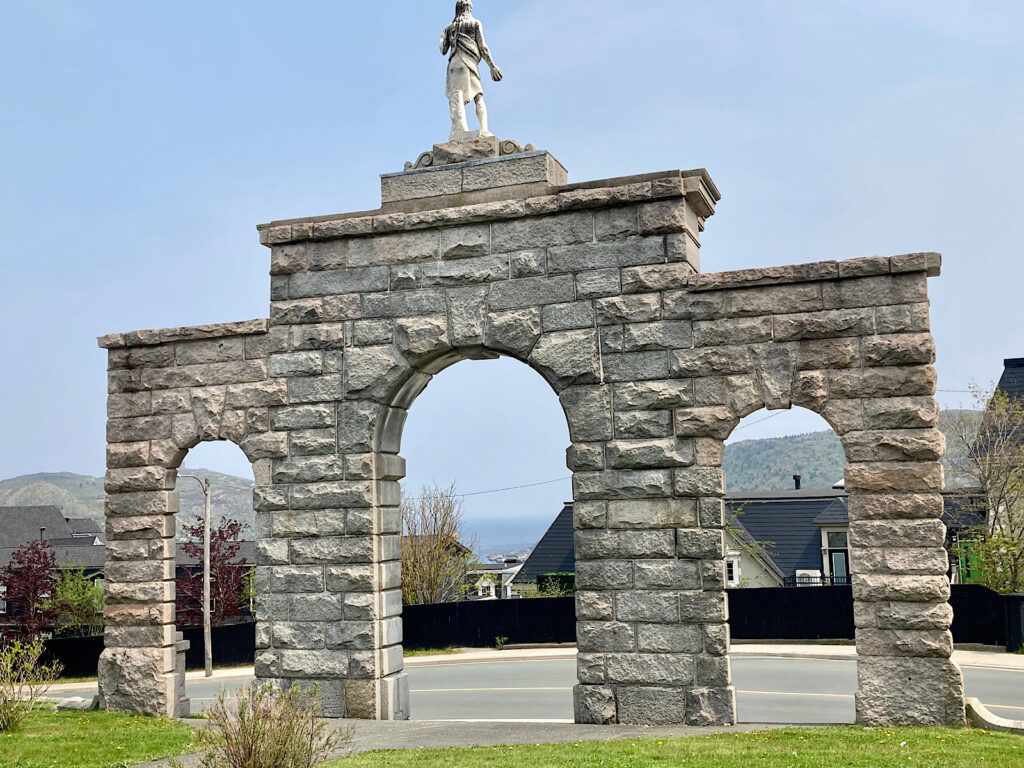
What do the legislature, gelato and jellybean colours have in common?
A place for the government, a sweet treat, and colours mark the end of our day.
From the Basilica, we strolled downhill along Military Road to Colonial Building – seat of the Newfoundland legislature for over 100 years from its opening in 1850. The site was officially reopened to the public on September 13, 2022, after a 13-year-long renovation. The painstaking renovation process is highlighted on the guided tour included in the entry fee.
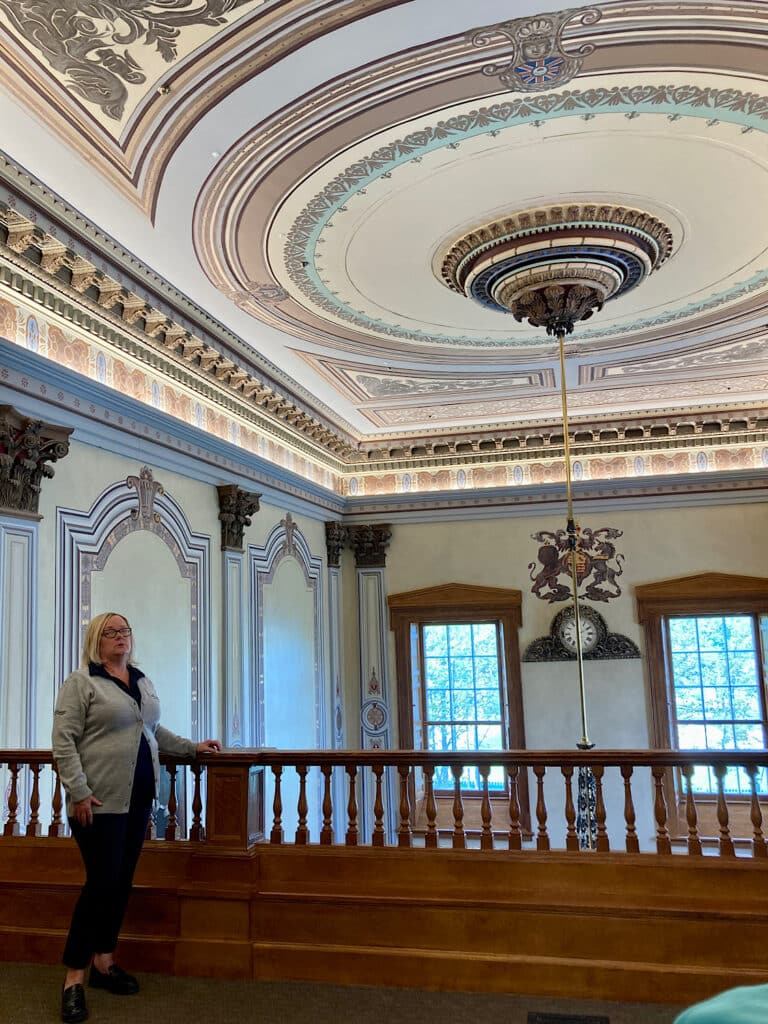
Our minds buzzing with historic names and dates and places, we wandered across the street to the Parlour Gelato shop, picked up a couple of cones and headed back to Bannerman Park – land originally set aside by Governor Bannerman for public use in 1864 – to enjoy our treats.
Energized once again, we meandered down Colonial Street before turning west on Gower Street to snap a few pictures of St. John’s infamous jellybean rowhouses.

Done for the day, we headed back to our rental apartment for dinner. If you’re still hankering for a night out, check out the fish ‘n chips at the Duke of Duckworth’s on Duckworth Street. The pub was packed the night we visited – be forewarned!
An Historic Day
What a day! The history in St. John’s is almost overwhelming. There is so much to see and learn. We barely scratched the surface, only touching on three of the 15 sites listed on the Streets of Old Downtown tour and two of the 24 sites on the Historic East End tour.
My advice, take your time and plan a couple of days to visit your choices of historic attractions in St. John’s. Plan a walking tour that doesn’t try to cover it all. Pick one or two museums to visit in a day.
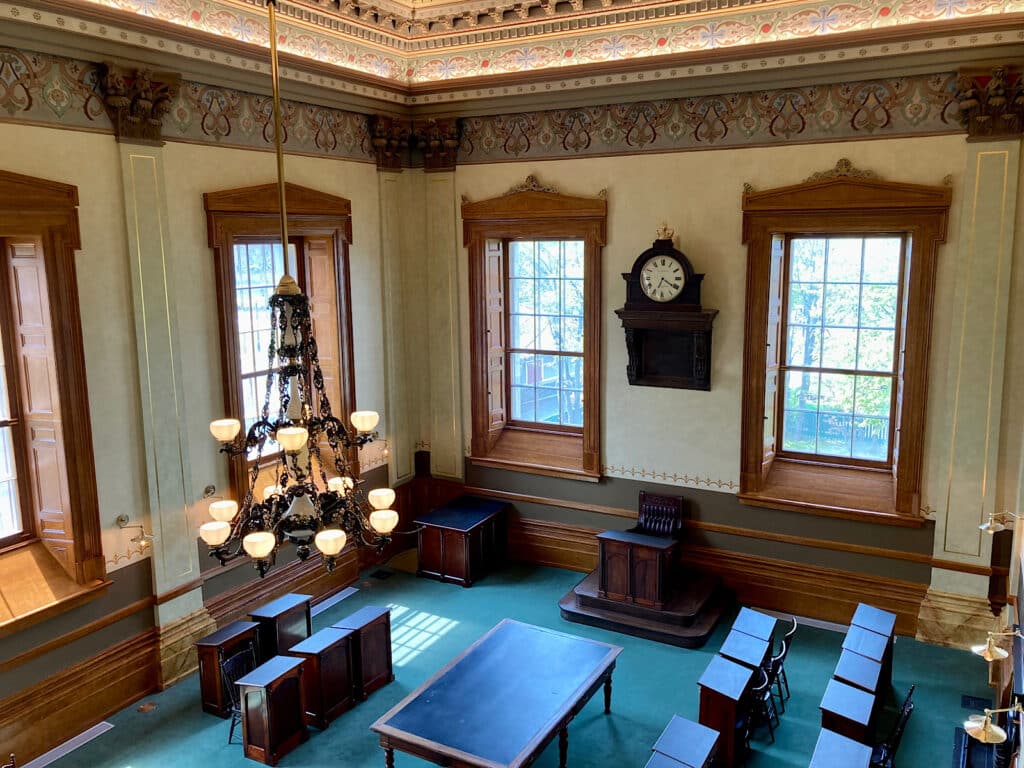
Public Parking in St. John’s
If you’re not staying in accommodation in the downtown area, you’ll need to find parking for your vehicle. While at the Visitor Centre, we picked up a copy of the Visitor Map: Get to Know St. John’s.
On the Downtown St. John’s map, you’ll find parking symbols. Street parking is available (for a cost), but as we planned to spend the day exploring, we chose a parkade off-street on Barter’s Hill near the Mary Brown’s Centre for $15.75/day. There is also one-hour free parking at City Hall a block above the Visitor Centre if you just need to pop in to get copies of the walking tours and a visitor map.
Note that parkades and downtown street parking are not RV-friendly; consider taking the Metrobus to downtown.
When You Go
The best months to visit for a self-guided walking of St. John’s are June to September.
Want to go for a little more challenging hike? Check out “Hiking Adventure in St. John’s” for a super scenic trail!
You can find more information about the city, accommodations, restaurants, attractions, and activities at Destination St. John’s.
If camping in your RV, reserve a spot ahead of time at Pippy Park.
Finally, if you love the idea of a walking tour but don’t want the work of trying to piecemeal one together yourself, consider a professionally guided tour with St. John’s Walking Tours.
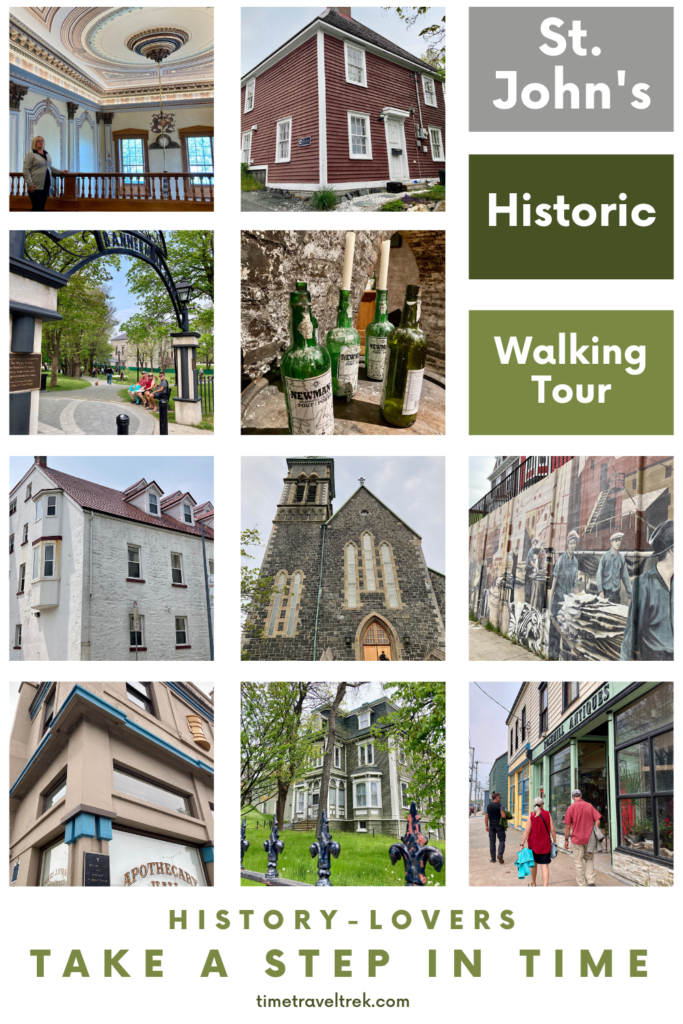

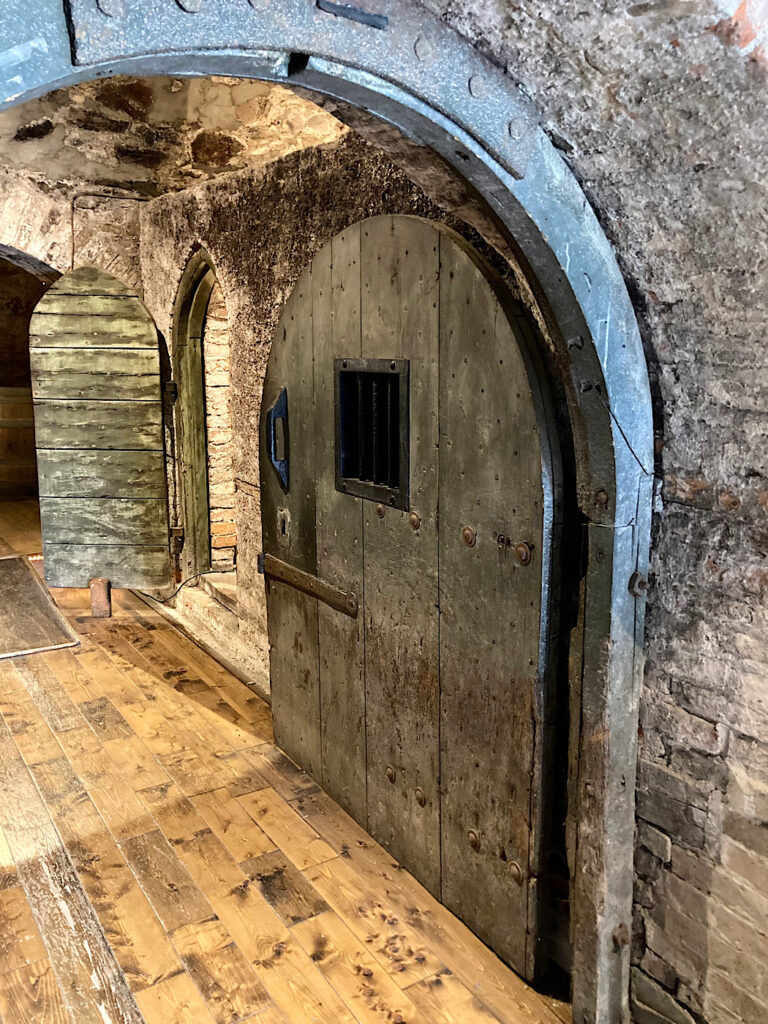
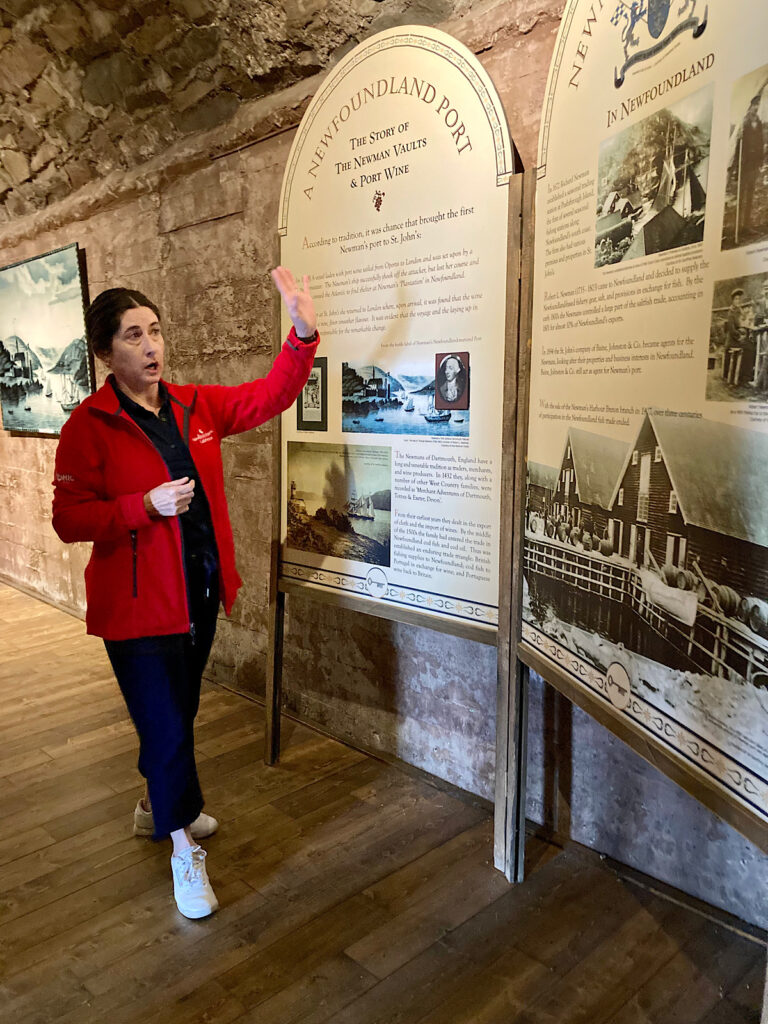
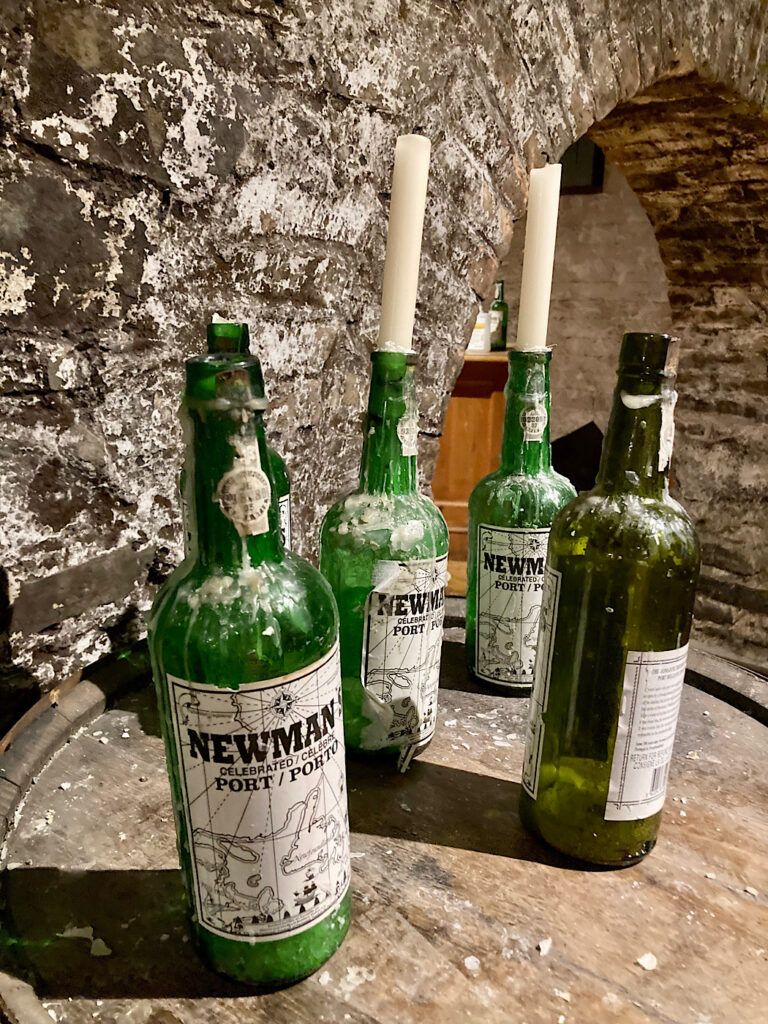


Always wanted to visit there, everything I have heard about it, seems like a really interesting place with a lot of history.
It is an interesting place. I hope you make it there one day!
I found your article to be most interesting. Our cruise docks at 12:30 and the other walking tours would be started by then. So this was most accommodating. I did not see the pricing for the various museums in the article.
Glad you find this post helpful Greg. Prices for museums are subject to change so I tend not to include them. The links, however, will take you to the museum website, where current prices can be found. Enjoy St. John’s – and Newfoundland!